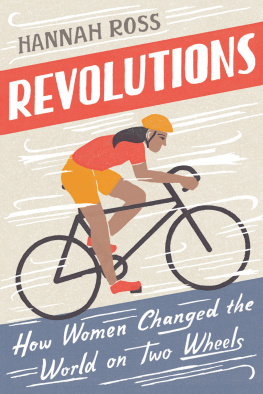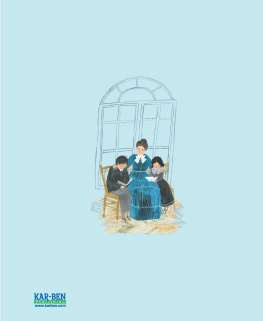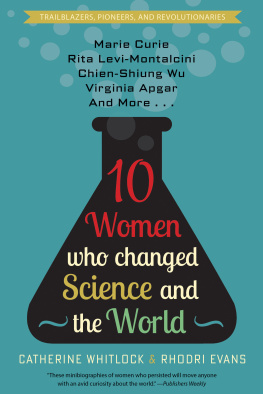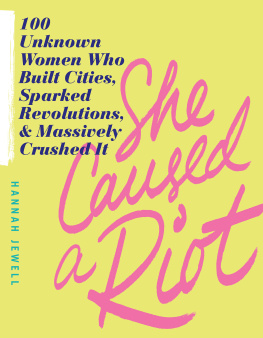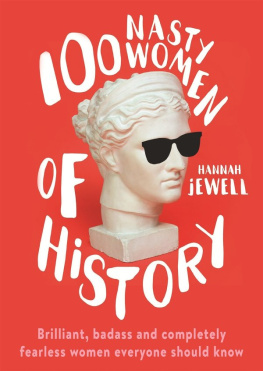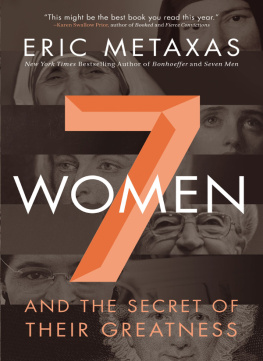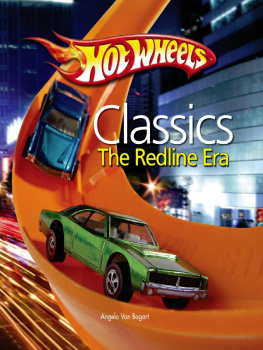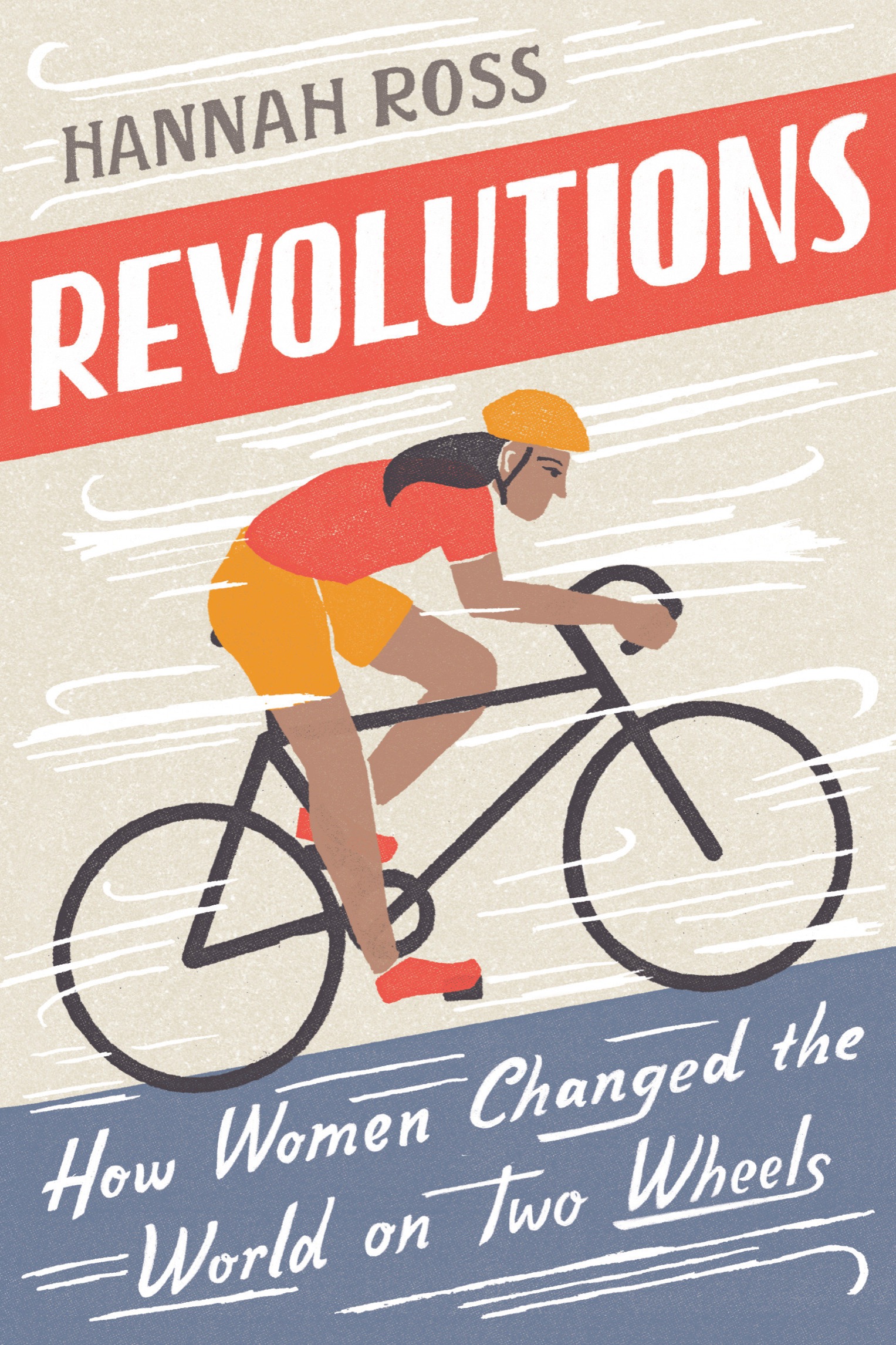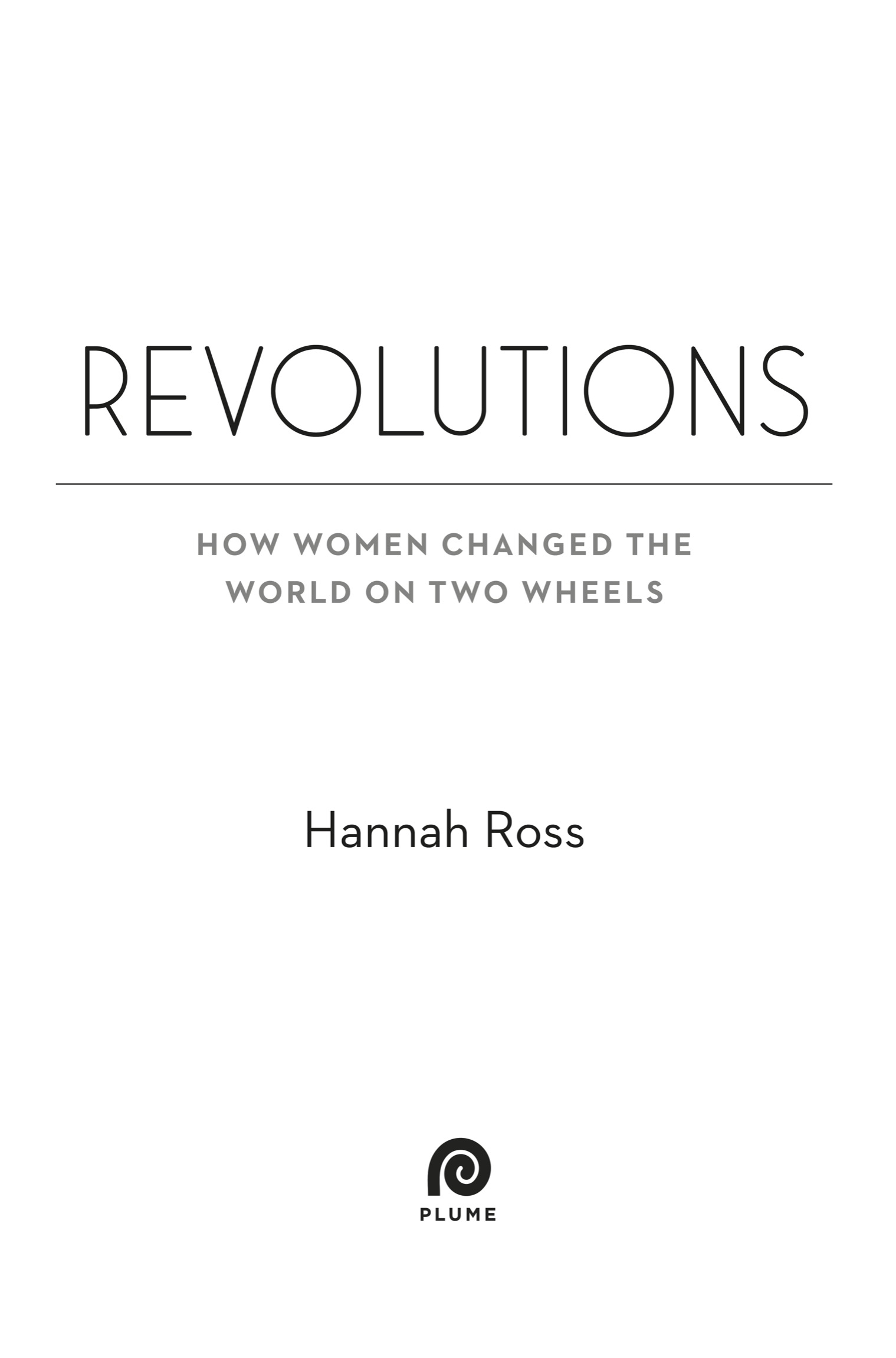
An imprint of Penguin Random House LLC
penguinrandomhouse.com

Copyright 2020 by Hannah Ross
Penguin supports copyright. Copyright fuels creativity, encourages diverse voices, promotes free speech, and creates a vibrant culture. Thank you for buying an authorized edition of this book and for complying with copyright laws by not reproducing, scanning, or distributing any part of it in any form without permission. You are supporting writers and allowing Penguin to continue to publish books for every reader.
Plume is a registered trademark and its colophon is a trademark of Penguin Random House LLC.
Photo credits:
Alice Austen House.
Peter Zheutlin.
Signal Photos/Alamy.
Michael Tant.
LIBRARY OF CONGRESS CATALOGING-IN-PUBLICATION DATA
Names: Ross, Hannah (Cyclist), author.
Title: Revolutions : how women changed the world on two wheels / Hannah Ross.
Description: New York : Plume, 2020. | Includes bibliographical references and index.
Identifiers: LCCN 2020003218 (print) | LCCN 2020003219 (ebook) | ISBN 9780593083604 (trade paperback) | ISBN 9780593083611 (ebook)
Subjects: LCSH: Women cyclistsHistory. | Cycling for womenHistory. | CyclingSocial aspects. | CyclingHistory. | Bicycle racingHistory.
Classification: LCC GV1057 .R67 2020 (print) | LCC GV1057 (ebook) | DDC 796.6082dc23
LC record available at https://lccn.loc.gov/2020003218
LC ebook record available at https://lccn.loc.gov/2020003219
While the author has made every effort to provide accurate telephone numbers, internet addresses, and other contact information at the time of publication, neither the publisher nor the author assumes any responsibility for errors or for changes that occur after publication. Further, the publisher does not have any control over and does not assume any responsibility for author or third-party websites or their content.
pid_prh_5.5.0_c0_r0
For Mike. And to the bump, who I hope grows to love cycling too.
CONTENTS
The Italian cyclist Alfonsina Morini Strada, who in 1924 became the first and only woman to ride in the Giro dItalia.
Maria Violet Ward supports Daisy Elliott on a bicycle during the photo shoot for her book, Bicycling for Ladies, 1895.
Katherine Kittie Knox, circa 1895.
Annie Kopchovsky, before setting off to cycle around the world. Boston, 1894.
Dervla Murphy on a tour of Spain, 1956.
Elsa von Blumen, US high-wheel competitive cyclist, circa 1882.
Marguerite Wilson when she stopped for tea at Ford Pass, near Exeter, on her record-breaking Lands End to John OGroats ride, 1939.
InternationElles at the start of stage 15, Limoux to Prat dAlbis, July 20, 2019.
PROLOGUE
LA PETITE REINE
La petite reine, the little Queen, is how the French have long affectionately referred to the bicycle. Which is ironic since the impression you might get from most accounts of over a century of cycling is that it hasnt involved many women. Turn on the TV or look at the sports pages every July and its hard to avoid coverage of the travails of almost two hundred cyclists battling it out over several thousand miles across France in one of the biggest sports events of the year. Every one of those taking part is a man. Look around you in most cities and towns in the world and you are likely to see more men on bikes than women. On this evidence, cycling certainly would appear to be more of a boys club than anything to do with little queens.
This is of course not the whole story. As far back as the late nineteenth century, when suffragist Susan B. Anthony told a newspaper that the bicycle has done more to emancipate women than anything else in the world, cycling has been a feminist issue.
When the bicycle emerged in the 1880s, it triggered a revolution for its unique dual qualities as both a practical and efficient machine to cover distances with comparatively little effort, taking people to places they might never otherwise have ventured, and for how fun it felt to pedal one. Even now, when there are so many ways to travel, people still love to bike. That feeling of pedaling along, the wind in ones hair, feeling close to flying on a descentit never gets boring.
If you ask people what they like most about cycling, the words that you will hear come up again and again are freedom and flying. Yet as I started researching the history of the bike it was striking how often women had their wings clipped. Whereas men have never had to think twice about jumping into the saddle and pedaling off, for women cycling has always been politically charged, with opinions raging, even today, about what they can and cant do on one.
In the 1890s, as the bicycle craze swept across large parts of the world, around a third of owners in the U.K. and North America were women. An impressive statistic when you consider that a woman on a bike at that time raised more than just a few eyebrows. In an age when womens bodies and behavior were heavily policed and controlled, with little freedom to use their bodies so physically and publicly, a woman cycling was nothing short of revolutionary. Despite having insultsand in some cases stoneshurled at them, they also had to contend with the hazards of impractical long skirts, petticoats and other cumbersome garments deemed essential to public decency. Undaunted, these women embraced this new machine with elan. And they didnt stop when they were told it would ruin their looks, leave them infertile or lead to promiscuity.
The bicycle was expanding their world and they were determined to seize the opportunity. Some would go as far as circumnavigating the globe on two wheels. But even those that never made it farther than the local park were riding over the established view that women were frail creatures, whoif their financial situation meant they didnt need to workwere best suited to a stifling and genteel life indoors, indulging in suitable pastimes such as needlework or flower pressing. This first wave of female cyclists set a match to such restrictive notions of femininity. Though most cycled for pleasure, it was a political act to be seen using their bodies in this way. Its no coincidence that the women fighting for universal suffrage, to be treated as equal citizens, were also enthusiastic cyclistsbicycles were nothing short of feminist freedom-machines.

